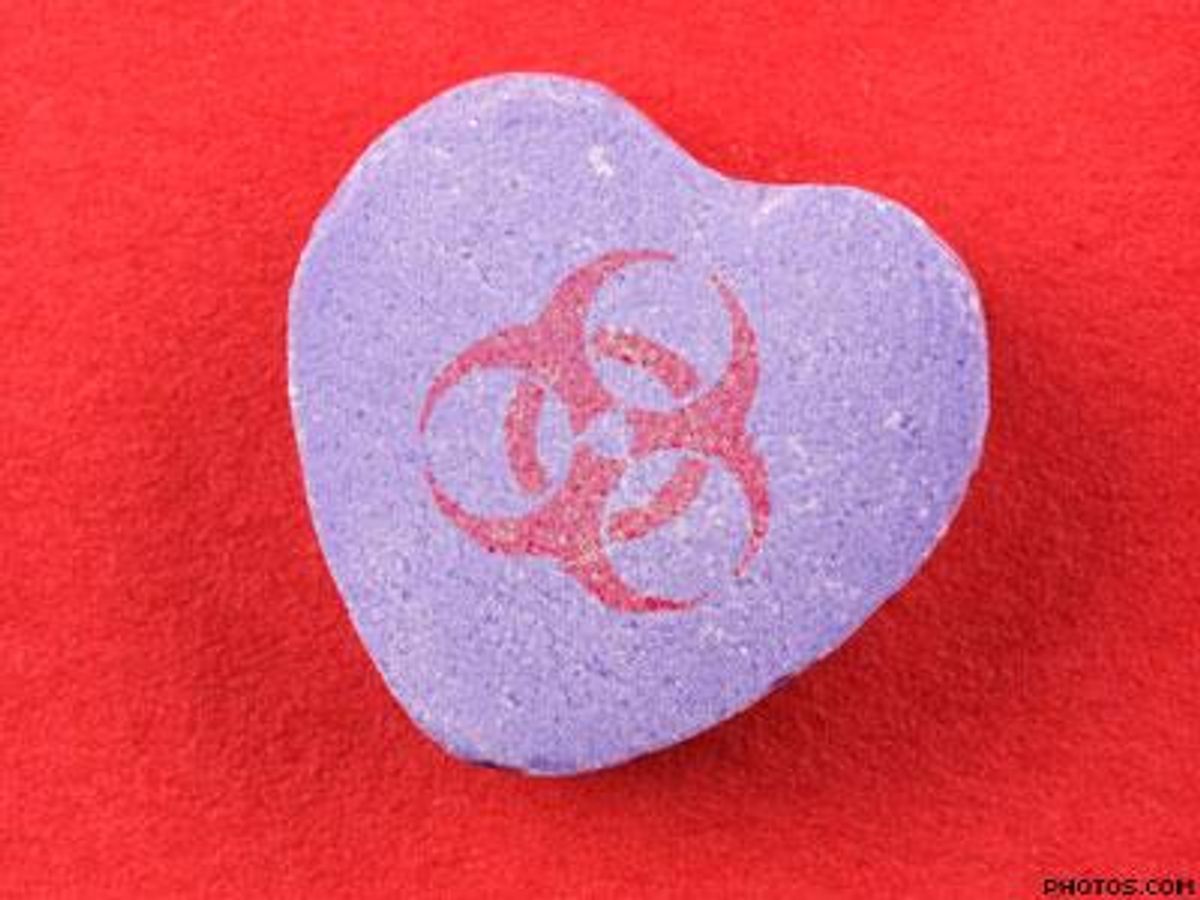What is dual infection, coinfection, superinfection?
Dual infection is when a person is infected with two or more strains of HIV. That person may have acquired both strains simultaneously from a dually infected partner or from multiple partners. A different strain of the virus is one that can be genetically distinguished from the first in a “family,” or phylogenetic tree. Acquisition of HIV strains from multiple partners is often called coinfection if all the strains were acquired prior to your seroconversion, that is, very early before any HIV infection is recognized. Acquisition of different HIV strains from multiple partners is called superinfection if the second virus is acquired after seroconversion. By the way, superinfection and reinfection mean the same thing.
Why does superinfection matter?
Superinfection is a concern because it may be a way for you to acquire drug resistance, and it may lead to more rapid disease progression. People who are HIV-positive and have HIV-positive partners often ask about superinfection. Public health officials need more information, though, in order to craft messages that help explain the risks of unprotected sex among HIV-positive persons, without creating undue anxiety that could undermine rewarding relationships and disclosure of HIV status with prospective new partners. Research on when superinfection may or may not occur could also identify types of immune responses that may protect against infection. This could guide the development of HIV vaccines.
Does superinfection really occur?
Many scientists believe that superinfection can occur. Research in monkeys has indicated that superinfection with viruses like HIV is possible. Scientific literature has so far examined 16 people with SEDI (apparent superinfection), including injection drug users in Asia, women in Africa, and men in Europe and the U.S. Laboratory analysis in some of these reports suggested that the second virus that appeared in these individuals was not present earlier, which suggests superinfection. The sensitivity of these laboratory assays is limited, though, and source partners have not been identified, so there is no way to know for sure when the second virus was acquired.
Who is at highest risk?
Ninety-five percent of apparent superinfection cases have occurred during the first three years of infection. Studies have found evidence of superinfection in 2 to 5 percent of persons in the first year of infection. Intermittent treatment in acute cases or for those just diagnosed may prolong their susceptibility to superinfection.
In contrast, studies of those with longer-term infection have found no evidence of superinfection. One study found no cases after a combined 1,072 years’ worth of observation of its participants. Another found none after 215 person-years of observation among intravenous drug users. A third found none after 233 person-years and 20,859 exposures through unprotected sex.
It is possible that having a very low viral load in your blood makes you more susceptible to superinfection. Low viral load can occur during combination antiretroviral therapy or in “healthy nonprogressors.” Antiviral immune responses and viral interference is lower for these people, so superinfection may occur more frequently. More research is needed to know for sure.
 Is it bad to have more than one virus?
Is it bad to have more than one virus?
Dual infection can have a harmful effect on your health. Superinfected individuals may have higher viral loads and lower CD4 counts, which causes more rapid disease progression. And the disease’s progression can accelerate after a second virus appears. Superinfection may also affect treatment of HIV, as it increases the likelihood of drug resistance, and you may not respond as well to available antiretroviral medication due to resistant strains.
What don’t we know?
There is a lot we still do not know about superinfection. First of all, we need to be more sure about whether superinfection actually occurs between HIV-positive persons. A definitive case of superinfection has not been documented, which would require that the timing of the second infection be traced to a relationship with a new sexual partner.
Second, we need to understand how and when superinfection occurs. Among researchers some consensus is developing about the idea that HIV-positive persons in early infection—and particularly the first year of infection—may be at higher risk for superinfection than others. We also should determine whether people with suppressed viral load on treatment are more susceptible to superinfection.
Third, we need to know how to protect against superinfection. If superinfection is rare, or if it only happens in recent infection, it is important to determine what makes an HIV-positive person immune to acquiring a second virus. It would be important to know, for example, if exposure to different viral strains may provide protective immunity against superinfection.
Lastly, we must continue to provide up-to-date scientific data on superinfection, its causes and consequences to HIV-positive people and health care professionals who work with them.
What do you recommend right now?
Counseling about superinfection should be based on understanding an individual’s sexual relationships. Before providing advice about superinfection, a counselor should know whether you are in a continuing relationship with another HIV-positive partner, whether you routinely seek out other HIV-positive partners for unprotected sex, and whether there is disclosure of HIV status with prospective partners. This background should inform the discussion about the risks and benefits of sex among HIV-positive partners. If the counselor does not have time to consider these personal issues, it would probably be best to simply say, “There is not enough information available about superinfection. If superinfection occurs at all, it probably occurs in the first few years after infection. After that, it may be rare.”
Even less is known about superinfection as a result of sharing needles, although it is reasonable to expect the same pattern of initial high risk followed by low risk during chronic infection. However, because intravenous drug users are at high risk of hepatitis C infections from sharing needles, efforts to obtain clean needles through needle exchange should always be emphasized. People with multiple sexual partners, or partners with multiple partners, should be counseled regarding the risks of other sexually transmitted infections. Vaccination for hepatitis B and periodic testing for syphilis is warranted.

 Is it bad to have more than one virus?
Is it bad to have more than one virus?













































































